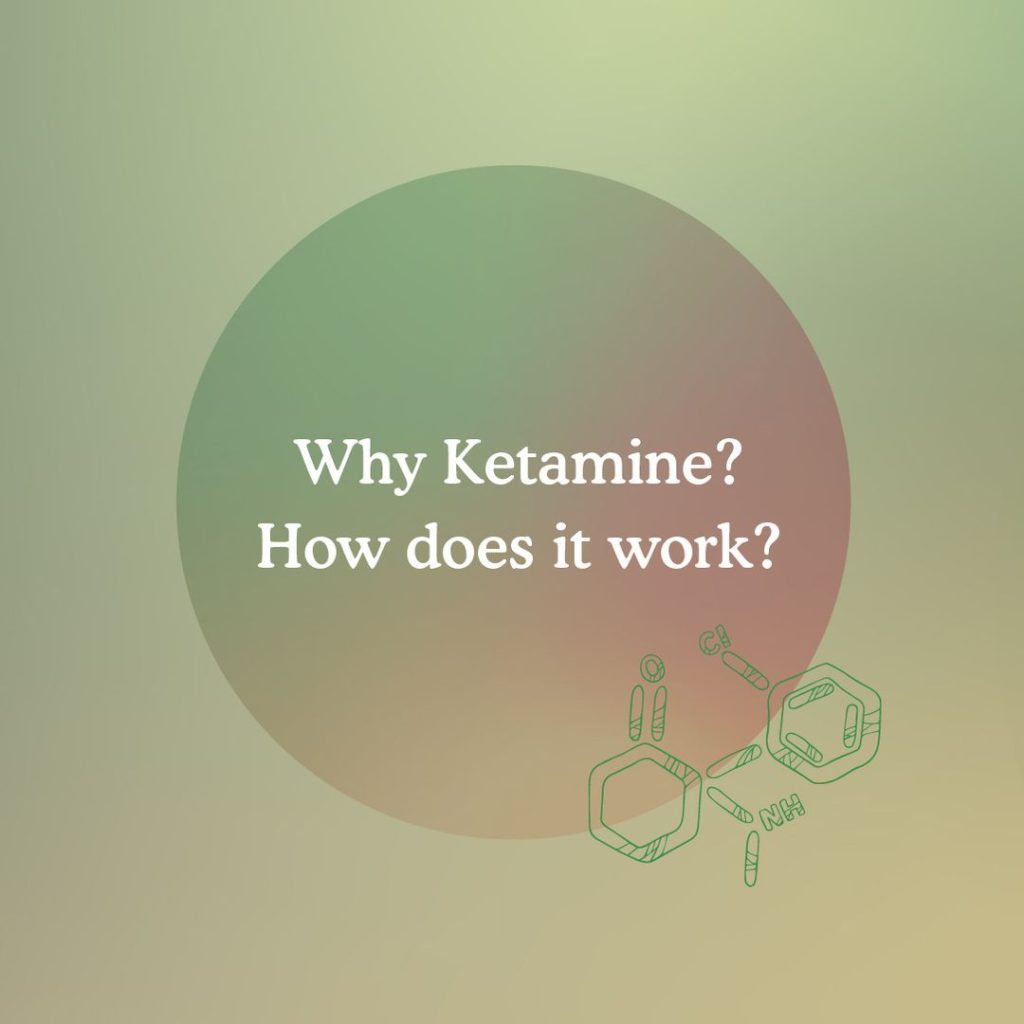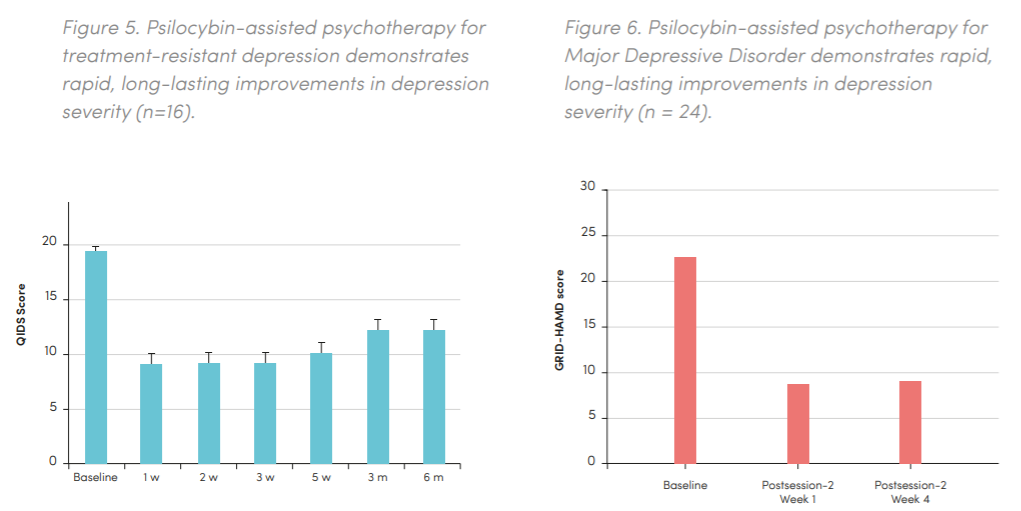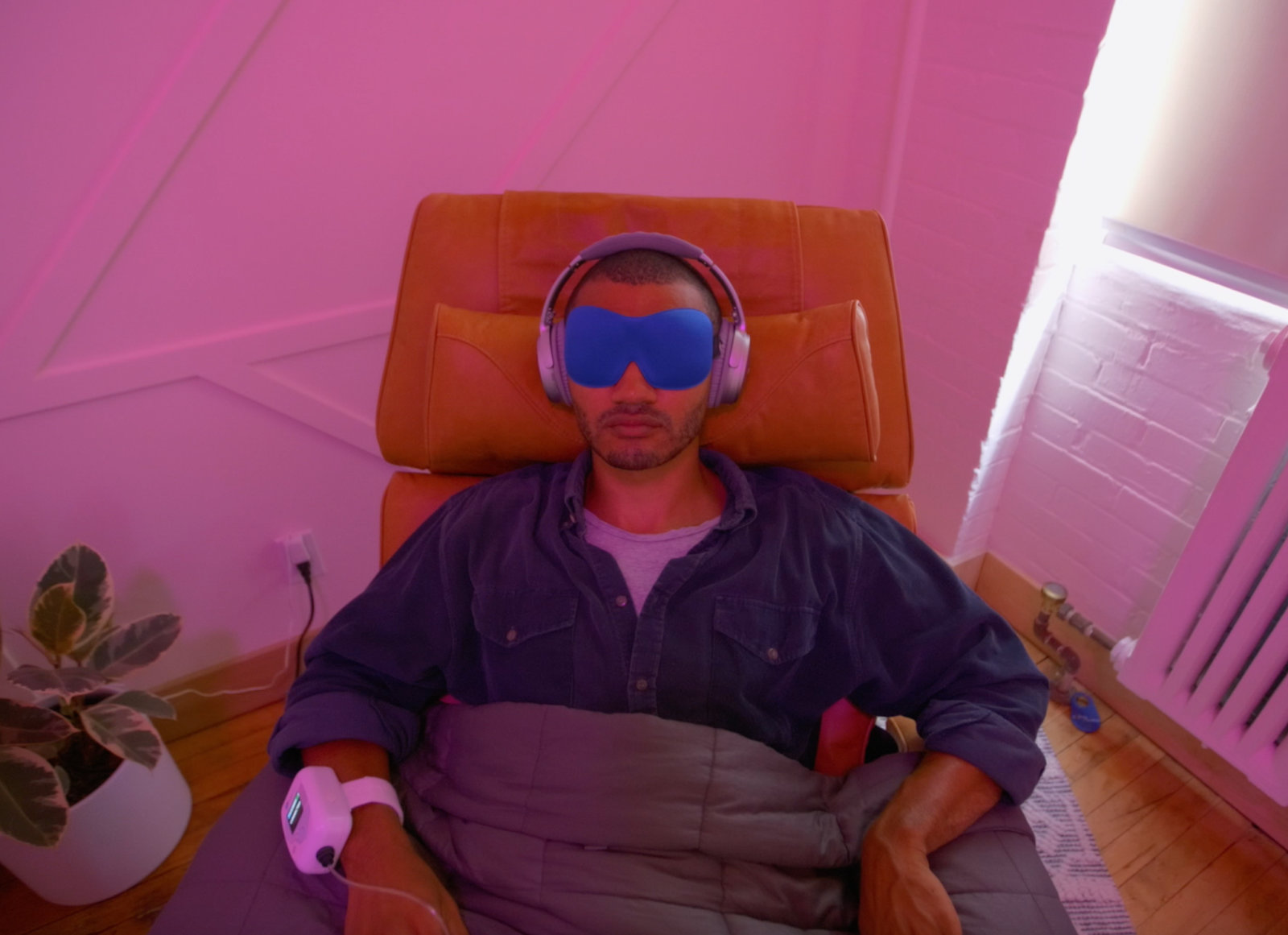
What is Ketamine?
To understand ketamine as a psychoactive medicine and use in therapy, we first need to explore its historical roots. Ketamine was designed in 1962 as a safer alternative to most surgery anesthetics because it does not suppress breathing rates like many previous formulations. Vietnam soldiers carried injectable syringes on the battlefield to administer it to anyone suffering a severe injury for immediate pain relief free of breathing complications. It went on to become part of the World Health Organization’s List of Essential Medicines, and was approved by the US Food & Drug Administration (FDA) in 1970 for its innovative safety profile. It remains invaluable for anesthesiology and critical care today.
In more recent times, a number of different myths have formed around ketamine. A common misconception is that it is a club drug, and also been given the street name ‘Special K’, with loss of consciousness and psychosis cited as harmful effects. While recreational use does have its associated risks, as does any compound when taken in a setting outside the safe administration of a trained professional, administering a safe quantity in a controlled environment is entirely safe. Another myth about the drug is that it is a horse tranquilizer. While it is indeed used in many veterinary practices, with dosages tantamount to an animal’s requirements, its impressive safety profile has made it a choice anesthetic for humans.
Why Ketamine?
The exploration and research around the use of ketamine as an antidepressant is on the rise. Although initially developed as an anesthetic, over the past several decades it has been found to have even greater potential. At the start of the 21st century, ketamine was found to have potent and rapid antidepressant properties at lower doses than the dosing levels for anesthetic purposes. In 2019, a larger-scale study of 235 patients using ketamine-assisted psychotherapy (KAP) demonstrated dramatic shifts in depression and anxiety for a wide range of mental health illnesses.
What has been observed is that ketamine can address a number of the unmet needs in mental health, particularly for Major Depressive Disorder (MDD), Treatment Resistant Depression (TRD) and Post Traumatic Stress Disorder (PTSD), which are all categories of depression that may mot have not responded to multiple antidepressant medications (Field Trip Psychedelic Medicine Whitepaper.)
This is a promising finding when we consider that on average, it generally takes 6 weeks for a patient to experience a response to their antidepressant medication. Particularly when some patients, unfortunately, never experience a response at all. In addition, 55% of patients tend to experience a relapse after their second antidepressant, and their relapse often happens within 4 months time. Depression relapse rates can also increase with each further antidepressant medication switch. Furthermore, the Covid-19 pandemic is compounding rates of depression and suicidal ideation.
Ketamine is the only legal psychedelic we can use in a clinical setting. Although this may change in the future, as legislative changes to reclassify many psychedelic drugs, such as psilocybin.
How Does It Work?
Ketamine has been found to reduce depressive symptoms within just two hours of administration, with effects lasting up to two weeks from a single dose. In the first studies of ketamine’s effectiveness in Treatment Resistant Depression, there was a response rate of over 70% in 24 hours after one dose, and a reduction in suicidal thoughts in over 50% of patients immediately after dosing compared to about 20% in the control group.
Multiple studies over the last few decades have revealed a myriad of effects that benefit a patient’s mental state. Among the unique effects observed, activation of AMPA receptors is implicated in the rapid, antidepressant-like properties observed with ketamine. AMPA receptors are commonly thought to play a role in normal, ongoing transmission between neurons. The drug’s interaction with GABA receptors has also been implicated in obsessive-compulsive disorder and depression. GABA modulates the inhibitory-excitatory balance necessary for proper brain function in mature brains. It also impacts serotonin, dopamine and glutamate.
In terms of promoting mental wellness and healing, research has revealed that a crucial aspect of the psychedelic experience is the ability to temporarily suspend the Default Mode Network of the brain. The Default Mode Network is a system of correlated brain regions that function when one is awake and conscious, but are not involved in any specific mental exercise. As we age and we mature, our Default Mode Network tends to form habits, relying on proven pathways and processes. This habitual pattern of thought is helpful in streamlining day-to-day functioning, but it makes learning new behaviours and forming new habits difficult. The algorithmic thought suspension provided by psychedelics is mentally freeing, allowing us the space to be able to form new pathways and patterns of thinking. Essentially, ketamine can help us get out of our own way.
It has unique biological, experiential, and psychological effects, and it is being used to enhance clinical treatment in a method called Ketamine Assisted Psychotherapy (KAP). While ketamine alone can be used as an antidepressant treatment, as it provides rapid relief from depressive symptoms, there is mounting evidence to support that when administered with psychotherapy, ketamine has longer lasting improvements in depression severity.
Clinical research exploring psilocybin-assisted psychotherapy (without the interference of traditional antidepressant medications) has confirmed a statistically significant antidepressant effect after just two sessions, with benefits maintained in patients at their 6-month follow-up (Figure 5; Carhart-Harris et al., 2017).

Figure 5 (page 13 of Field Trip Psychedelic Medicine Whitepaper)
How Does it Feel?
While there are general agreed upon characteristics of the ketamine experience, it is different for every person based on set, setting, and dose. Depending on the dosage and the purpose of administration, experiences typically fall into one of three categories: psycholytic, psychedelic, and anesthetic.
The psycholytic effect occurs at lower doses, with the intention of bringing clients into an expanded state while being able to stay connected to the present moment – and by extension, the therapist. The psycholytic experience often feels like being in a trance state with heightened sensory awareness and increased ability to look at and process therapeutic material.
The psychedelic effect occurs at low and moderate doses, with the intention of bringing clients into a dissociative state held in the container of the therapeutic presence. This experience produces the feeling of observing one’s mind, body, and life from an outsider’s perspective. The client is encouraged to release the grasp on the present moment and go into the experience being presented in the disassociated state. As the client ‘comes down’, the therapist is there to help ground back into the body and explore what came up during the psychedelic experience.
The anesthetic effect occurs at high doses, such as those used in hospital settings. Field Trip Health clinics do not administer ketamine at these doses.
Whether psycholytic or psychedelic, the ketamine experience lasts about 45 to 90 minutes. Ketamine has a long tail, meaning that clients will often feel slightly disoriented for a few hours after the end of the session. Due to this, we require that clients have a ride home after sessions. We also offer relaxation rooms for clients who would like to spend some more time in a tranquil environment.

Positive Treatment Outcomes of Ketamine Therapy
Some of the skepticism around psychedelics is that the dissociative experience can be too intense or unpleasant. Due to the reluctance among patients and researchers to induce a psychedelic ‘trip’ experience, many studies have attempted to minimize ketamine’s unwanted dissociative effects. However, numerous studies have demonstrated there is an enhanced benefit from the presence of psychedelic experiences, and these findings parallel psilocybin studies that show the relationship between profound, mystical, psychedelic experiences and positive treatment outcome.
The psychedelic experience, regardless of the medicine facilitating it, is the key to improving mental health and well-being. To generate dramatic changes in a person’s mental health, especially for those with treatment resistant depressive disorders, a dramatic experience is required.

When taken without proper care, intent, or in an anxiety-provoking environment (i.e. in the wrong set and setting), a “bad trip” can certainly occur. At a lower dosage, Ketamine provides more of a euphoric experience than a full on trip. This milder effect helps to induce a state of neuroplasticity, allowing a patient to form new pathways and patterns of thought to creatively combat depressive mental states. Not a single study to date has demonstrated an antidepressant effect without some degree of perceived psychoactivity (Dore et al. 2019).
KAP utilizes a careful and personalized dosage escalation strategy in order to facilitate the state necessary for each patient to experience the positive effects of ketamine. Some degree of mind alteration is necessary for ketamine to have an effect, and for a patient to experience these effects.
In the Field Trip Health model, skilled psychotherapists guide the creative psychedelic endeavour, carefully crafting dosage levels tailored to the patient. They help to set intentions and foster the right mindset for entrants, minimize any potential anxiety felt during the experience, serving as trusted guides and interpreters through groundbreaking insights and revelations, and maximize the effectiveness of the treatment by aiding in the integration of these new insights into the patient’s daily life.
Ketamine provides the mental freedom and agency required for patients to take steps forward; to change their minds, and strive to relieve stagnation of mental growth. Beyond just suppressing symptoms in the “pill a day” model, the Field Trip Ketamine Assisted Psychotherapy system provides tailored mystical experiences to stimulate profound healing. And through the guidance of a team of psychotherapists and support staff, these experiences are integrated into lifelong positive changes in mental well-being.
Field Trip Health has clinics across Canada in Toronto, Montreal, Vancouver, Ottawa, Hamilton, Kitchener-Waterloo, Thunder Bay, and Sault Ste. Marie, and an at-home program for those who live more than an hour from the nearest clinic. If you are ready to begin your journey toward healing and build your personalized treatment plan, then book a free discovery call with one of our team members.
Written by Alexa Keeler for Field Trip Health
SOURCES
Carhart-Harris R. L., Bolstridge M., Day, C. et al. (2018). Psilocybin with psychological support for treatment-resistant depression: six-month followup. Psychopharmacology, 235(2), 399–408. Available from: https://link.springer.com/article/10.1007%2Fs00213-017-4771-x
Cohen S.P., Bhatia A., Buvanendran A., Schwenk E.S. et al. (2018) Consensus Guidelines on the Use of Intravenous Ketamine Infusions for Chronic Pain From the American Society of Regional Anesthesia and Pain Medicine, the American Academy of Pain Medicine, and the American Society of Anesthesiologists. Reg Anesth Pain Med. 43(5): 521–546. Available from: https://www.ncbi.nlm.nih.gov/pmc/articles/PMC6023575/
Domino E. F. (1980). History and pharmacology of PCP and PCP-related analogs. Journal of Psychedelic Drugs 12, 223–227. Available from: https://www.tandfonline.com/doi/abs/10.1080/02791072.1980.10471430
Dore J., Turnipseed B., Dwyer S. et al. (2019) Ketamine Assisted Psychotherapy (KAP): Patient Demographics, Clinical Data and Outcomes in Three Large Practices Administering Ketamine with Psychotherapy. Journal of Psychoactive Drugs 51:2. Available from: https://www.tandfonline.com/doi/full/10.1080/02791072.2019.1587556
Griffiths R., Johnson M., Richards W et al. (2011) Psilocybin occasioned mystical-type experiences: Immediate and persisting dose-related effects. Psychopharmacology (Berl) 218 (4):649–65. Available from: https://link.springer.com/article/10.1007%2Fs00213-011-2358-5
Luckenbaugh, D. A., Niciu M. J., Ionescu D. F. et al. (2014) Do the dissociative side effects of ketamine mediate antidepressant effects. Journal of Affective Disorders 159:56–61. Available from: https://www.sciencedirect.com/science/article/abs/pii/S016503271400055X?via%3Dihub
Palhano-Fontes F., Andrade K.C., Tofoli L.F. et al. (2015) The Psychedelic State Induced by Ayahuasca Modulates the Activity and Connectivity of the Default Mode Network. PLoS One 10(2): e0118143. Available from: https://www.ncbi.nlm.nih.gov/pmc/articles/PMC4334486/
Perrine S. A., Ghoddoussi F., Michaels M. S. et al. (2014). Ketamine reverses stress-induced depression-like behavior and increased GABA levels in the anterior cingulate: an 11.7 T 1H-MRS study in rats. Progress in Neuro-Psychopharmacology and Biological Psychiatry 51, 9–15. Available from: https://www.sciencedirect.com/science/article/abs/pii/S0278584613002467?via%3Dihub
Phelps, J. (2017). Developing Guidelines and Competencies for the Training of Psychedelic Therapists. Journal of Humanistic Psychology, 57(5), 450–487. Available from: https://journals.sagepub.com/doi/10.1177/0022167817711304
Field Trip Psychedelic Medicine Whitepaper. Available from: https://assets.website-files.com/5e54d05f4c5ced4e8b2d005d/6013d2e61dceb55cf20844d2_Field Trip Psychedelic Medicine Whitepaper.pdf
Vollenweider F.X., Preller K.H. (2002) Psychedelic drugs: neurobiology and potential for treatment of psychiatric disorders. Nat Rev Neurosci 21, 611–624. Available from: https://www.nature.com/articles/s41583-020-0367-2
Zanos P., Moaddel R., Morris P. J., Georgiou P., Fischell J., Elmer G. I., et al. (2016). NMDAR inhibition-independent antidepressant actions of ketamine metabolites. Nature 533, 481–486. Available from: https://www.nature.com/articles/nature17998
Zarate C. A., Jr., Singh J. B., Carlson P. J., Brutsche N. E., Ameli R., Luckenbaugh D. A., et al. (2006). A randomized trial of an N-methyl-D-aspartate antagonist in treatment-resistant major depression. Arch. Gen. Psychiatry 63, 856–864. Available from: https://jamanetwork.com/journals/jamapsychiatry/fullarticle/668195